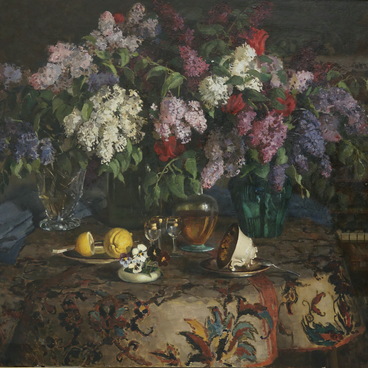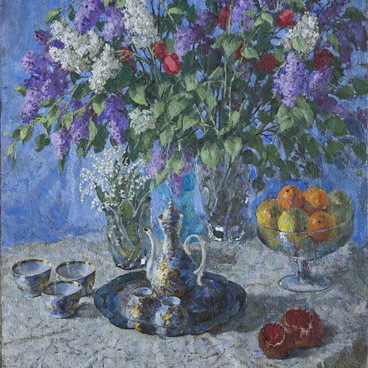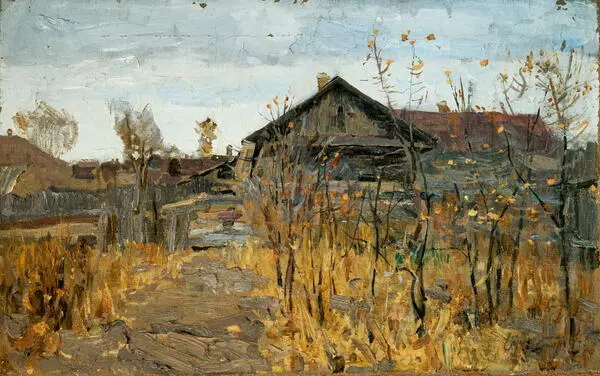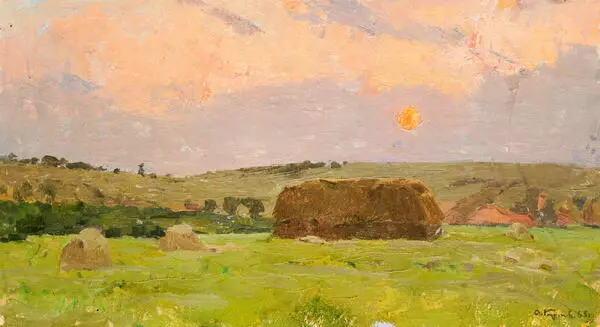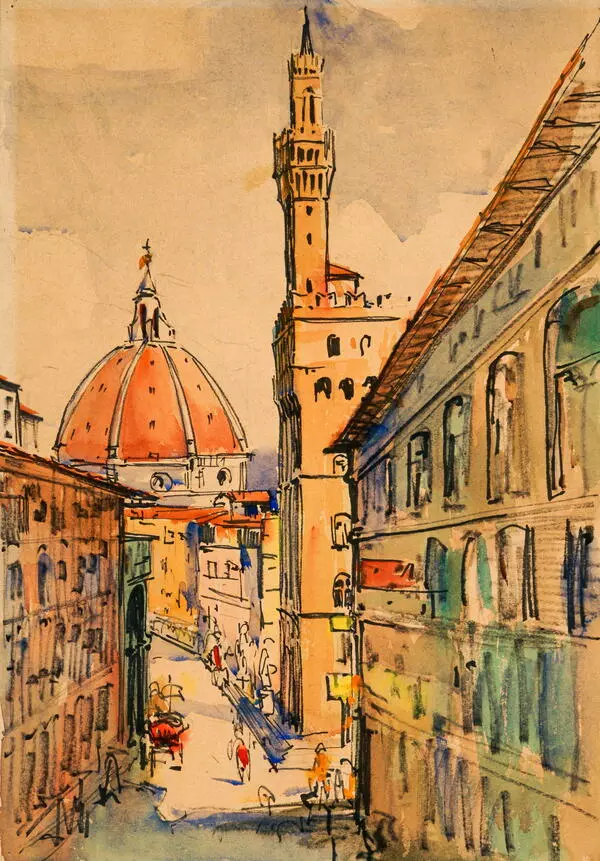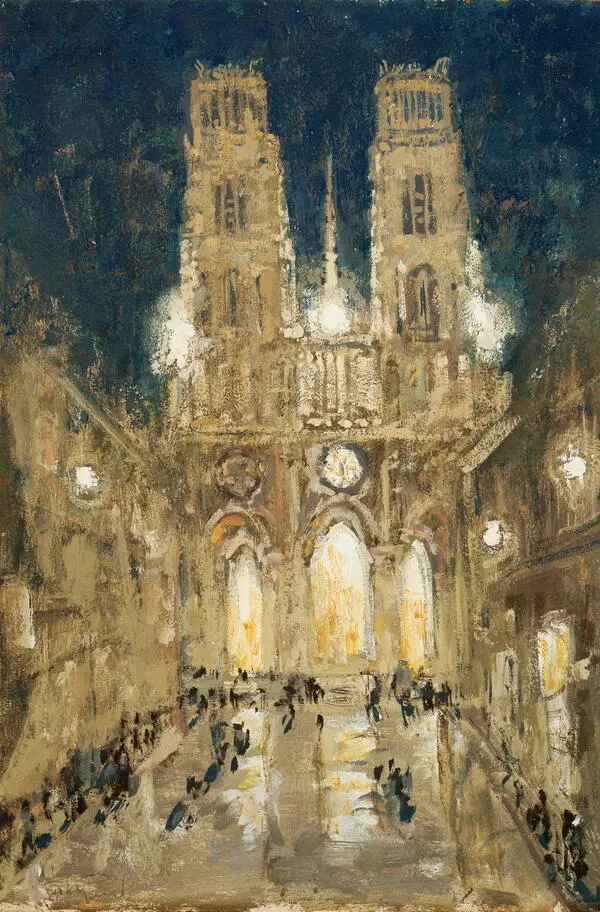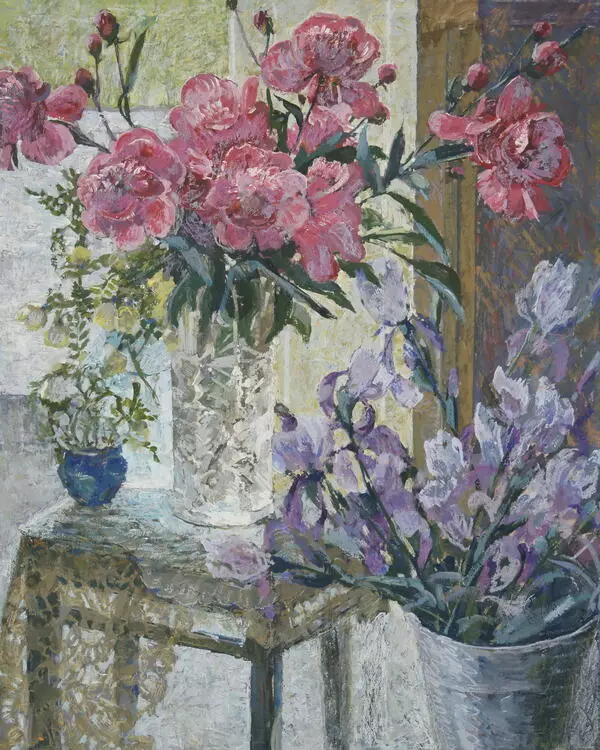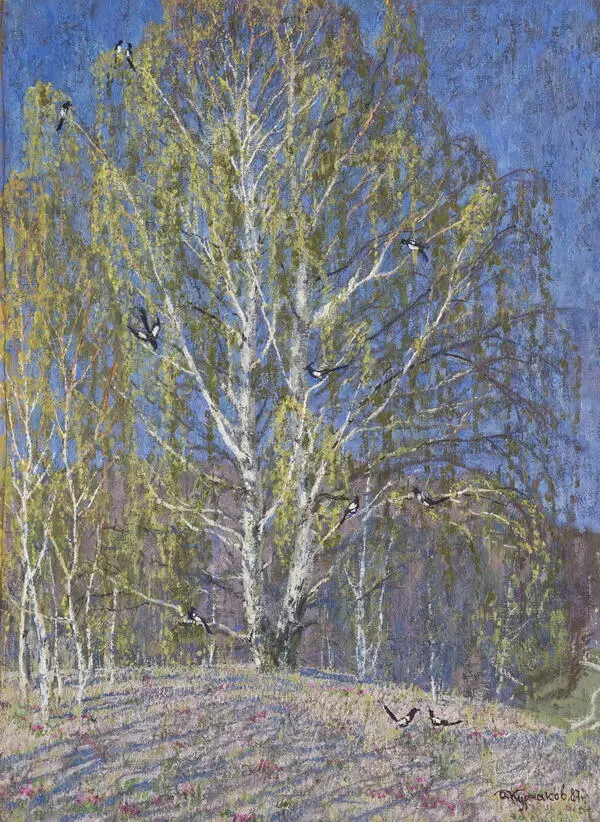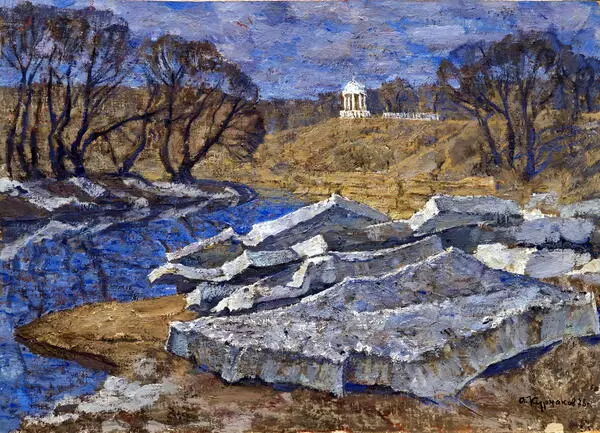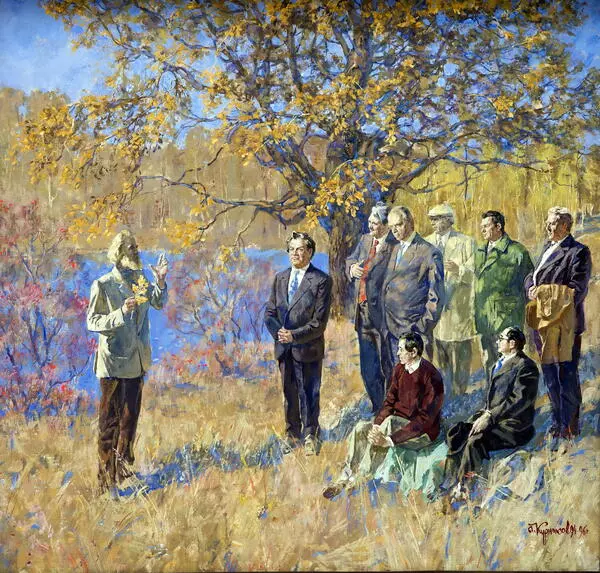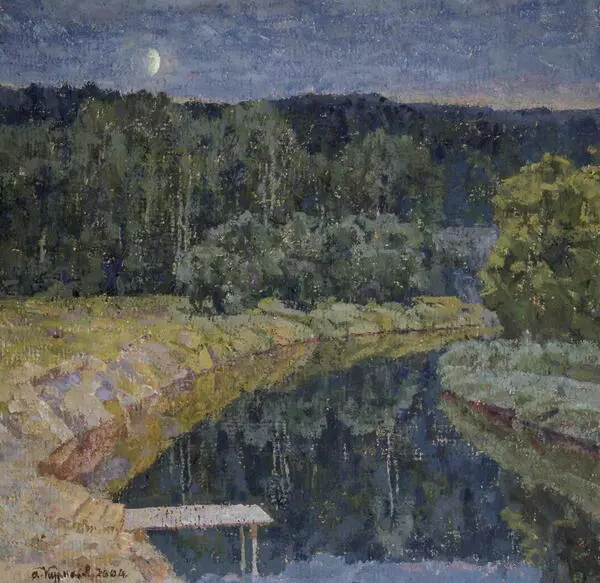The picture is one of the ‘floral still lifes’. In the foreground, against a dark olive background, the artist presented a fragment of an image of a small rectangular table covered with a silk-velvet tablecloth. The maroon tablecloth itself is covered around the entire perimeter with a large white napkin, slightly muted by bluish and yellow shades, exquisitely created in the ‘richelieu embroidery’ technique along the hanging openwork edges. This type of embroidery was popular in our country even in the pre-war period and did not lose its elegance and beauty at all but became a characteristic feature of the interior decoration of rooms in the 50s of the 20th century.
On the right side of the table, the artist depicted a ceramic vase in a grayish-light tone, with its low wide shape reminiscent of an ellipse or a rustic pot. The vase has an openwork base, which somehow echoes the same openwork edge of the covered napkin. On the vase itself, along its entire convex shape, a golden-scarlet floral pattern is visible.
The vase is depicted with an elegantly but rather clearly defined bouquet with small rosehip flowers, with numerous blossoming and just appeared buds, with delicate milky-white petals on thin dense prickly twigs hanging on top of each other and braiding against each other. Dark green small leaves with jagged edges set off the emerald-white tone of the canvas and give the interior a special sophistication and nobility.
‘White rose, wild rose, more beautiful than garden roses’ - sounded in the rock opera ‘Juno and Avos’. In the Brothers’ Grimm fairy tale, the sleeping princess was called Rosehip because of the tenderness of her face, and in the tale of Charles Perrault, the rosehip so entwined the palace in which the beauty slept with its prickly branches that no one could find it. Painting “Rosehip” by Mikhail Vrubel personified his bright dreams. Contemporary artists also often use wild rose flowers in their still lifes.
To the left of the vase, on the same table, is a small glass blue candy jar with a silver-gray metal lid, which, with its deep blue color, seems to dilute the declared greenish-milky monochrome of the whole picture.
Andrei Ilyich Kurnakov repeatedly returns to the genre of still life, to the depiction of flowers in his paintings, such unique, elegantly painted bouquets close to his heart.
On the right side of the table, the artist depicted a ceramic vase in a grayish-light tone, with its low wide shape reminiscent of an ellipse or a rustic pot. The vase has an openwork base, which somehow echoes the same openwork edge of the covered napkin. On the vase itself, along its entire convex shape, a golden-scarlet floral pattern is visible.
The vase is depicted with an elegantly but rather clearly defined bouquet with small rosehip flowers, with numerous blossoming and just appeared buds, with delicate milky-white petals on thin dense prickly twigs hanging on top of each other and braiding against each other. Dark green small leaves with jagged edges set off the emerald-white tone of the canvas and give the interior a special sophistication and nobility.
‘White rose, wild rose, more beautiful than garden roses’ - sounded in the rock opera ‘Juno and Avos’. In the Brothers’ Grimm fairy tale, the sleeping princess was called Rosehip because of the tenderness of her face, and in the tale of Charles Perrault, the rosehip so entwined the palace in which the beauty slept with its prickly branches that no one could find it. Painting “Rosehip” by Mikhail Vrubel personified his bright dreams. Contemporary artists also often use wild rose flowers in their still lifes.
To the left of the vase, on the same table, is a small glass blue candy jar with a silver-gray metal lid, which, with its deep blue color, seems to dilute the declared greenish-milky monochrome of the whole picture.
Andrei Ilyich Kurnakov repeatedly returns to the genre of still life, to the depiction of flowers in his paintings, such unique, elegantly painted bouquets close to his heart.
